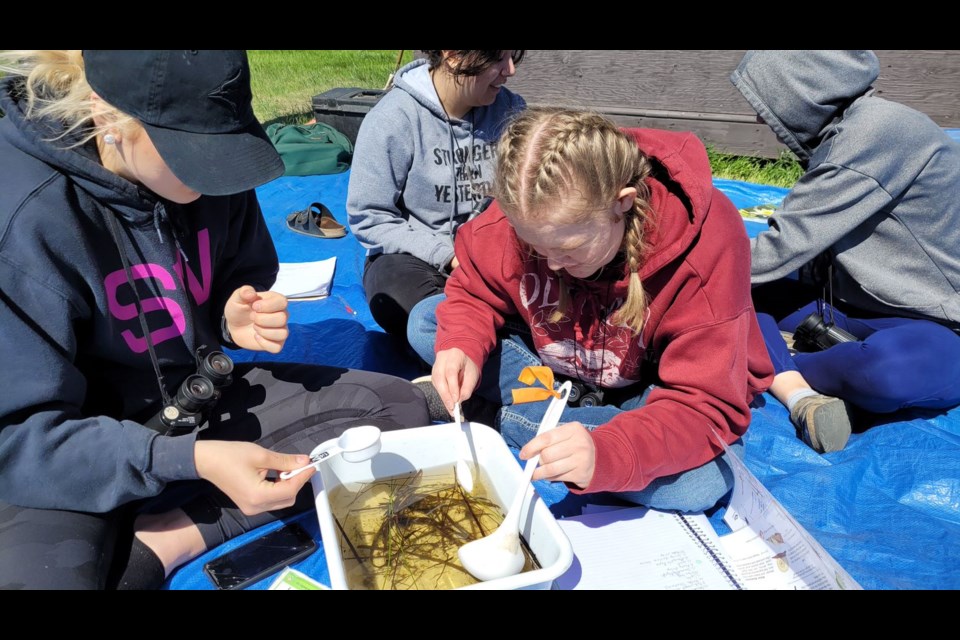MOSSBANK — Ducks Unlimited Canada (DUC) took three classes from Mossbank School on a field trip to Old Wives Lake Nature Area (OWLNA) on May 31 and June 1, as part of the school’s involvement in the DUC Wetland Centres of Excellence network.
“(DUC is) a conservation organization that is focused on conserving, managing, and restoring wetlands and associated habitats for waterfowl, wildlife, and people,” said Suzanne Joyce, a biologist and communications specialist with DUC Saskatchewan.
DUC has been active in Canada since 1938, Joyce said, and its second large wetland project was in Saskatchewan. DUC has many landowner projects such as their forage program, marginal areas program, and wetland restoration help.
DUC’s national Wetland Centres of Excellence program started in 2016 — Mossbank School was the first in Canada to sign on. Since 2017, the school has used OWLNA as an outdoor classroom to expose students to the bird-watching destination, which can attract up to 65,000 birds per day.
On May 31, two classes of elementary students headed out to OWLNA to spend time outside and learn about the abundance of life to be found. Activities included bird pellet dissection, pond dipping, and a nature scavenger hunt with binoculars.
June 1 saw a group of 11 high school science students at OWLNA to work on specific projects with the help of Joyce and her recently-retired colleague Barbara Hanbidge.
Hanbidge worked for DUC for 30 years as a biologist and provincial education coordinator. She’s taken thousands of students on field trips.
“When students find out about the really wonderful things that are living around them, and are there all the time, they’re always a little surprised,” Hanbidge said. “Students can be any age … there’s just as much wonder on the face of a senior citizen. … It can be quite humbling to see all of the plants and animals that surround you that are just carrying on and living their lives.”
Hanbidge and Joyce scooped marsh water and students helped identify the dozens of species contained in just one bucket’s worth of water.
The elementary students were especially enthusiastic about finding bird poop pellets, which the biologists then showed them how to “read.” They were able to make inferences about the species, their diet, and their eating habits.
Shore birds are everywhere at OWLNA. Students learned about the adaptations the birds have evolved to feed in marshlands, such as stilt-like legs and long, skinny beaks.
Joyce said the high school students needed much less guidance on their trip. They were doing a unit on taxonomy, photo documentation, and identification, and they came prepared.
“There were a couple that are going on into biology and environmental science,” she said. “They automatically started identifying some things and taking pictures. We started looking at the macro invertebrates with them, so they got a few more species there, and that’s always entertaining.”
Saskatchewan has no wetlands policy, Hanbidge said, and many people look at wetlands as a nuisance. If the wetlands are gone, everything that lives in them and depends on them will also disappear.
“The world is not here for us to take advantage of it,” she added. “It’s not here for us, we’re part of what exists on this planet. And there are so many examples every day where something is being removed so that people can do what they want. … I just think that’s the wrong way to look at the world.
“I think if we can take students — of any age — out and show them what’s there, (they) get a better appreciation of the complexity of the world we live in.”


.png;w=120;h=80;mode=crop)

